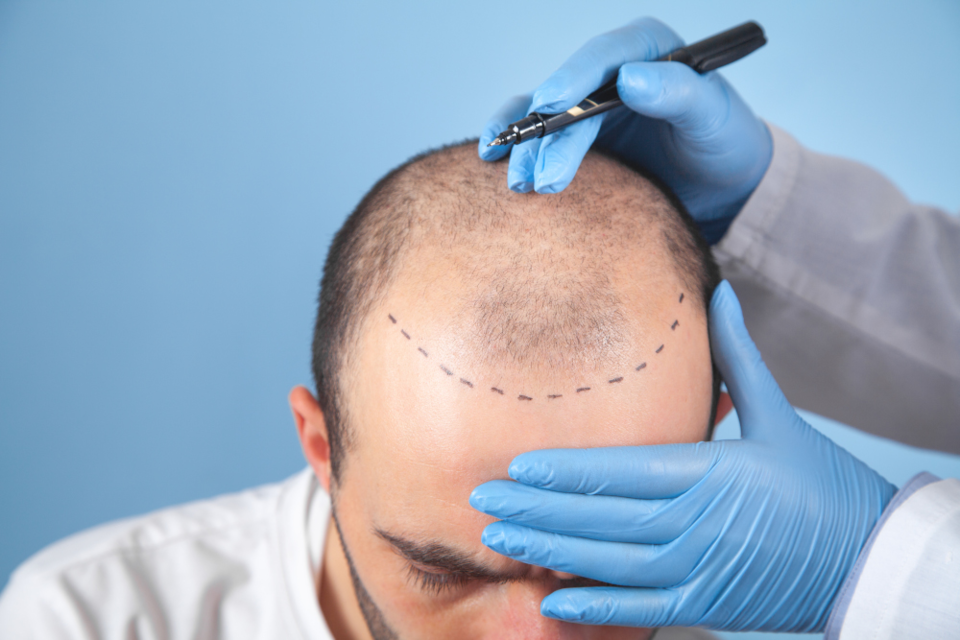
Hair loss can be an emotional and challenging journey, affecting not only your appearance but also your self-esteem. While there are various options to manage hair thinning, a hair transplant has become one of the most popular solutions for those seeking a permanent fix. If you're considering a hair transplant in Dubai(زراعة الشعر فى دبي), you might be wondering if it's the right option for you. In this article, we will explore the factors to consider, the procedure, the benefits, and the risks, helping you make an informed decision. A hair transplant may just be the solution you're looking for.
Understanding Hair Loss: Causes and Types
Before jumping into the hair transplant process, it’s essential to understand the underlying cause of your hair loss. Hair thinning can result from various factors, including genetics, hormonal changes, stress, medical conditions, and poor diet. The most common type of hair loss is androgenetic alopecia, often referred to as male or female pattern baldness. Other causes include alopecia areata, stress-related hair shedding, and post-pregnancy hair loss. Recognizing the type and cause of your hair loss will help determine if a hair transplant is a viable solution for you.
What is a Hair Transplant?
A hair transplant is a surgical procedure where hair follicles are removed from a donor area (usually the back of the scalp) and transplanted to the thinning or balding areas. There are two main types of hair transplant techniques: Follicular Unit Transplantation (FUT) and Follicular Unit Extraction (FUE). FUT involves removing a strip of skin with hair follicles, while FUE extracts individual follicles one at a time. Both methods are effective, but FUE is less invasive and leaves minimal scarring, making it the preferred choice for many individuals.
Candidates for Hair Transplants:
Not everyone is a suitable candidate for a hair transplant. The ideal candidates are individuals who have experienced significant hair loss and have areas on their scalp with enough healthy hair follicles to donate. Those with early-stage hair thinning may not yet be ideal candidates, as the transplanted hair may eventually be affected by ongoing hair loss. The procedure is typically more successful for those with thick, dense hair in the donor area. Additionally, individuals in good overall health tend to recover better from the surgery.
The Hair Transplant Procedure: What to Expect
A hair transplant is typically performed under local anesthesia, meaning you remain awake during the procedure, but the area being worked on is numbed. The procedure can take anywhere from four to eight hours, depending on the extent of the transplant. After the hair follicles are harvested, they are meticulously implanted into the thinning or bald areas, ensuring a natural-looking result. Some discomfort, swelling, and redness may occur post-surgery, but these symptoms usually subside within a few days.
Benefits of a Hair Transplant:
Hair transplants offer several benefits, making them an attractive option for individuals seeking a long-term solution to hair loss. One of the most significant advantages is the natural look it provides. Since the transplanted hair comes from your own scalp, it matches the existing hair, creating seamless and realistic results. Additionally, hair transplants are permanent. Once the hair follicles take root in the transplanted area, they continue to grow naturally for the rest of your life. This makes hair transplants a one-time investment in restoring your hairline.
Risks and Considerations:
Although a hair transplant is generally safe, it’s not without risks. Some potential complications include infection, scarring, and unnatural hair growth patterns. In some cases, individuals may experience shock loss, where the transplanted hair falls out before new hair starts to grow. Additionally, while the results are often permanent, hair loss can continue in other areas of the scalp, meaning future procedures may be necessary. It’s important to have realistic expectations and understand that results may vary depending on various factors, including hair type, age, and the skill of the surgeon.
Post-Procedure Care and Recovery:
After your hair transplant, proper care is crucial to ensure the best possible results. The recovery period varies from person to person but generally involves a few days of rest. Most people can return to work within a week, though strenuous activity and direct sunlight should be avoided for several weeks. You may be prescribed medications to prevent infection and promote healing. It’s also essential to follow any post-surgery guidelines provided to minimize the risk of complications and ensure the transplanted hair thrives.
Conclusion: Is a Hair Transplant Right for You?
Deciding whether a hair transplant is right for you depends on a variety of factors, including the severity of your hair loss, your overall health, and your expectations. For those with significant hair loss who are looking for a permanent solution, a hair transplant can offer a natural and long-lasting result. However, it’s important to carefully consider the procedure’s costs, potential risks, and the time commitment required for recovery. If you believe a hair transplant could be the right choice for you, taking the time to thoroughly research the process and discuss it with a trusted professional can help ensure you make the best decision for your needs.













